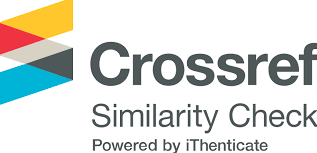The effect of light intensity to survival rate and growth of Knema pierrei Warb
Keywords:
Tree species, light intensity, Knema pierrei, growth, survival rateAbstract
The scientific name of the species is Knema pierrei Ward, which belongs to Myristicaceae familiy. The species is a multi - purpose and indigenous tree species. Currently, the number of the species in natural forests and secondary forest is quite limited anh has not yet widely studied. In addition, the demand on forest development using indigenous tree species has significantly increased, which leads to the fact that basic studies to improve planting techniques for the species should be under consideration. As such, the study on the effect of light intensity to the growth of Knema pierrei Ward is very neccessary. The use of light covers is to reduce temperature,
increase the air humidity. The temperature, the air humidity, and soil temperature under the light covers significantly depend on light intensity. The survival rate of Knema pierrei Ward ranging from 0 to 4 months was effected by light intensity. Experiment results in this study showed that if
trees received smaller than 7.85% of light intensity, the survival rate of seedlings was above 82.2%. The light intensity directly effecting on seedlings was 29.5%, the survival rate was strongly declined to below 50%; and there were no light covers, the seedlings were 5.6%. The level of light intensity also had significantly effects to the growth of diameter at breast
height, and tree height. Knema pierrei Ward at the age from 0 to 2 months needs to be highly covered, which supported the seedlings receiving below 7.85% of light intensity for optimal growth of the root collar diameter and tree height. From 3 to 4 months, the seedlings need more light. Achieving 23.96% of light intensity, the seedlings showed the best growth of the root collar diameter, and tree height; and the average dried biomass stock per seedling was maximum.
References
1. Hà Thị Hiền, 2008. “Ảnh hưởng của mức độ che sáng đến sinh trưởng của Dẻ đỏ giai đoạn vườn ươm”. Tạp chí Khoa học Lâm nghiệp. Hà Nội, số 2.
2. H. Lyr et al.,1982. Sinh lý cây gỗ, tập 1. Nxb. Nông nghiệp, Hà Nội.
3. Lee David W., Steven F. Oberbauer, Baskaran, Krishnapilay, Marzalina Mansor, Haris Mohamad· Son Kheong Yap., 1997. Effects of irradiance and spectral quality on seedling development of two Southeast Asian Hopea species, Oecologia 110: 1 - 9.
4. Đoàn Đình Tam, 2011. Nghiên cứu các biện pháp kỹ thuật gây trồng cây Vối thuốc tại một số tỉnh miền núi phía Bắc. Luận án tiến sĩ Nông nghiệp, Hà Nội.
5. Nguyễn Ngọc Tân, 1987. Ảnh hưởng của chế độ ánh sáng, nước và phân bón đối với cây Hồi ở giai đoạn vườn ươm. Luận án PTS khoa học Nông nghiệp, Hà Nội.
6. Đặng Thịnh Triều, 2003. “Ảnh hưởng của chế độ ánh sáng tới sinh trưởng của cây con Vạng trứng (Endospermum chinense Benth) trong giai đoạn vườn ươm”, Tạp chí Khoa học Lâm nghiệp, Hà Nội, số 4.
7. Vũ Văn Vụ, Vũ Thanh Tâm và Hoàng Minh Tấn, 2000. Sinh lý học thực vật. Nxb. Giáo dục, Hà Nội








